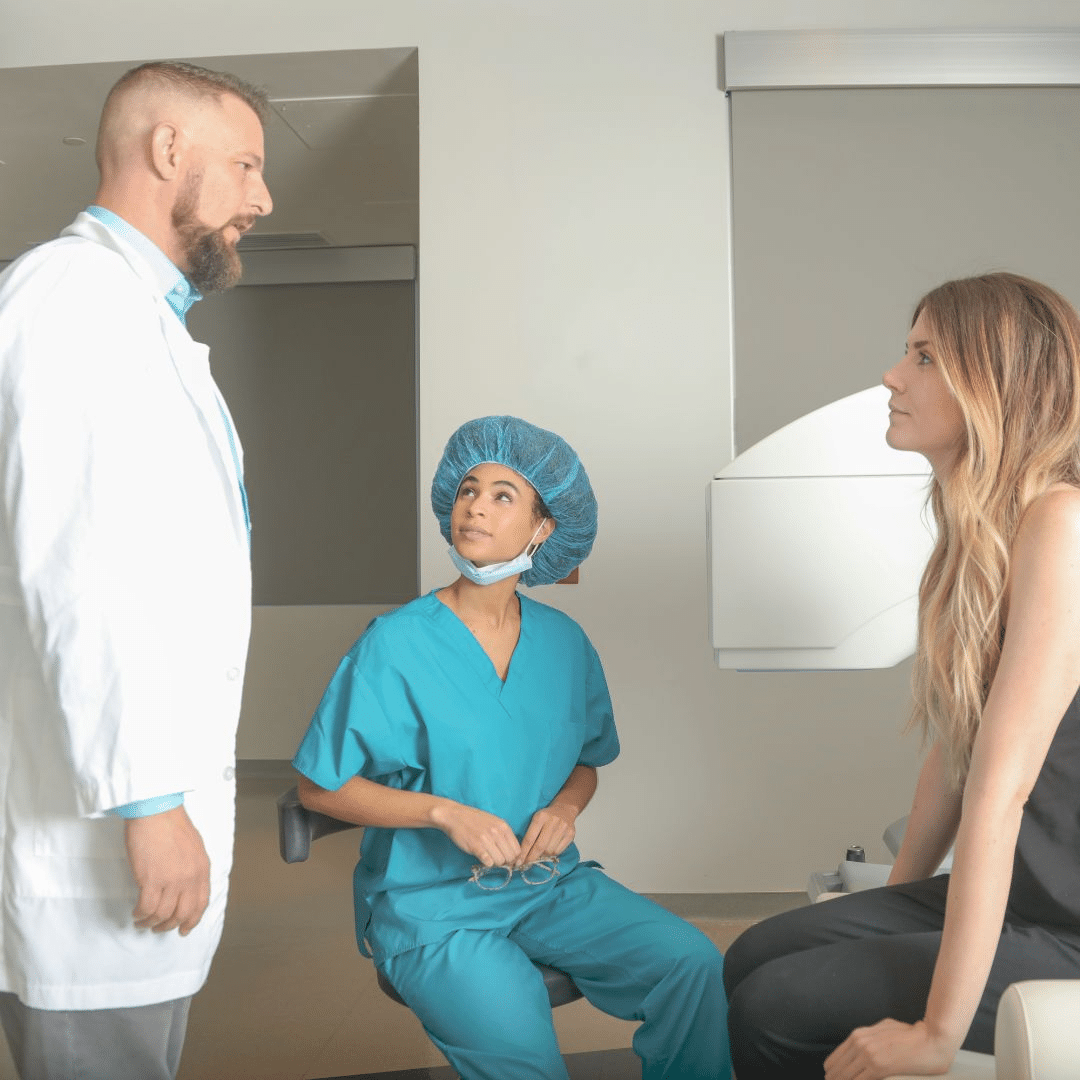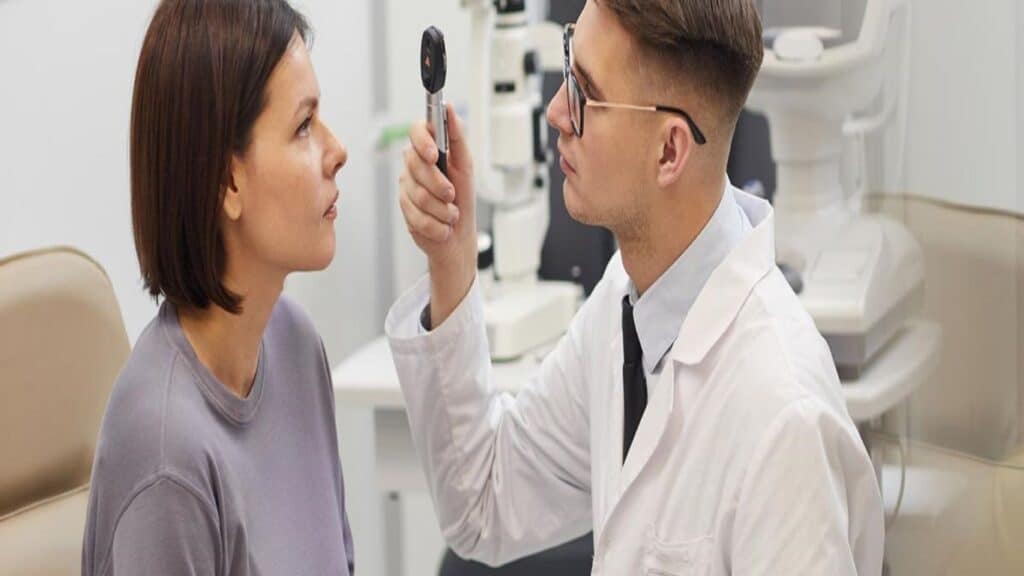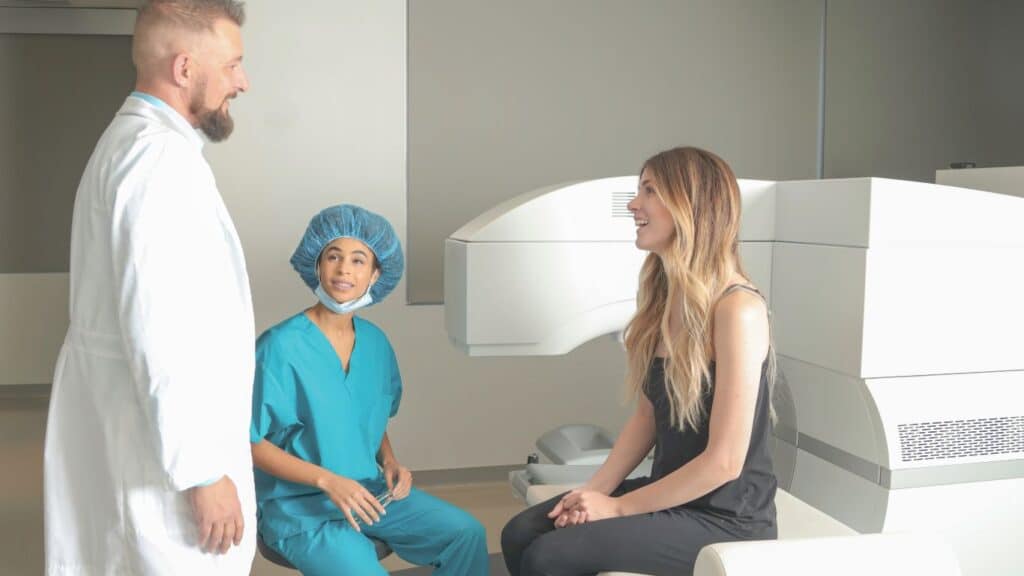So, you've been dealing with the annoying symptoms of poor vision—blurry sight, difficulty reading small print, and maybe even trouble driving at night. After much consideration, you decided to go through the process of LASIK or laser eye surgery to correct your vision. Great choice! But now that you've undergone the procedure, you're likely to find yourself with questions, like "How long does it take to recover from LASIK eye surgery?"
This is a common concern for many, and we're here to provide you with the answers you need. At Texas Vision & Laser Center, we have many years of experience and thousands of LASIK surgeries under our belt, so we know a thing or two about LASIK recovery time. In this post, we'll walk you through the LASIK recovery process and answer "How long does it take to recover from LASIK eye surgery?" If you want a more personalized explanation, feel free to book a consultation today. We're happy to help!
Book Your Consultation With TVLC Today & See The World Clearly!
Before diving into the recovery process, it's important to understand that proper preparation plays a crucial role in the success of your LASIK surgery.
Your journey begins with an in-depth consultation with an ophthalmologist. This initial meeting is crucial, as it helps determine if you're a suitable candidate for LASIK surgery. During this consultation, your ophthalmologist will review your medical history, assess the health of your eyes, and discuss your vision goals. This is the perfect opportunity to ask any questions and address any concerns you might have.
Next, you'll undergo a comprehensive pre-LASIK evaluation, which includes various eye tests to ensure your eyes are fit for the procedure. These tests measure your eye's shape, thickness, and curvature, metrics that are vital for customizing your LASIK surgery. A thorough pre-surgery evaluation significantly reduces the risk of complications. The evaluation may also include a dry eye test and pupil dilation to gauge how your eyes will respond post-surgery.
Finally, it's essential to understand both the risks and benefits associated with LASIK surgery. While the benefits include improved vision and decreased reliance on glasses or contacts, it's also important to be aware of potential risks such as dry eyes, glare, or halos around lights, especially at night. According to the American Academy of Ophthalmology, severe complications due to LASIK surgery are rare. An understanding of both sides helps set realistic expectations and prepare for a well-informed experience.
So, you're prepped and ready for the big day. You might be wondering what's next and what to expect during the actual LASIK procedure.
The LASIK procedure itself is quick and generally straightforward. It begins with the ophthalmologist creating a thin flap in the cornea using a femtosecond laser. This flap is then lifted to expose the underlying corneal tissue. Next, an excimer laser is used to reshape the cornea, correcting its curvature to improve vision. Once the reshaping is complete, the flap is carefully repositioned to allow it to adhere without the need for sutures.
But does LASIK hurt? Fear not. LASIK surgery is virtually pain-free due to the use of local anesthesia in the form of numbing eye drops. These drops are administered before the procedure to ensure you're comfortable throughout. Patients might feel slight pressure when the corneal flap is created, but it generally lasts only a few seconds. Post-operatively, patients may experience mild discomfort or a gritty sensation in their eyes, similar to having an eyelash trapped under the eyelid.
One of the most appealing aspects of LASIK surgery is its speed. The entire procedure usually takes around 15-30 minutes for both eyes. The actual laser correction phase often lasts less than a minute per eye. This briefness is not indicative of a lack of thoroughness but rather a testament to the advanced technology and expertise involved. It's astonishing how such a life-changing procedure can be completed in the time it takes to have a coffee break.
Congratulations, you've made it through your LASIK procedure! Now, let's dive into what to expect immediately after your surgery as you begin your journey to clear vision.
Once your LASIK surgery is complete, you'll be guided to a recovery room where you'll be given a bit of time to rest. This is essential to ensure that the initial healing process begins under optimal conditions. Medical staff will monitor you briefly to check for any immediate side effects or complications. This initial observation period helps in identifying any immediate postoperative concerns, which occur in less than 1% of cases.
You might be eager to know how quickly you'll see improvements. It's common to experience some blurred vision right after the procedure, which can feel disconcerting but is perfectly normal. Most patients notice significant vision improvement within the first 24 hours. Research shows that over 99% of LASIK patients achieve 20/40 vision or better within a week of surgery. Your ophthalmologist will provide you with protective eyewear and detailed instructions to ensure your eyes heal correctly.
In terms of sensations, you might experience a range of feelings immediately after your surgery. It's normal to feel a mild burning or itching sensation, similar to having a grain of sand in your eye. This discomfort typically subsides within a few hours. Moreover, your eyes may water excessively, and you might be sensitive to light. Lubricating eye drops and resting in a dimly lit room can significantly improve your comfort levels during this initial recovery phase.

You've made it through your LASIK surgery, and now it's all about taking care of your eyes to ensure a smooth recovery. Here's everything you need to know about the first week after your procedure.
Right after surgery, it's crucial to follow your ophthalmologist's care instructions meticulously. At TVLC, our team will give you a customized mix of antibiotic and anti-inflammatory eye drops to prevent infection and reduce inflammation. Avoid touching or rubbing your eyes, as this can disrupt the healing corneal flap. It's also wise to rest your eyes as much as possible by limiting activities like screen time and reading during the first 24 to 48 hours. Can you drink after LASIK surgery? No, it's best to avoid alcohol during the recovery time as well.
Schedule and attend all follow-up appointments as advised by your ophthalmologist. Typically, you'll have your first follow-up visit within 24 to 48 hours post-surgery. These appointments are critical for monitoring your healing process and addressing any concerns promptly. These follow-up appointments are important for the early detection of issues that can lead to interventions that prevent long-term complications.
Experiencing some discomfort is a normal part of the recovery process, but there are effective ways to manage it. You might experience mild dryness, itching, or a gritty sensation in your eyes, which can usually be alleviated with the prescribed lubricating eye drops. A randomized study published in Clinical Ophthalmology showed that using artificial tears regularly can significantly reduce postoperative discomfort and dryness. Over-the-counter pain relievers like acetaminophen can also be used to manage any mild pain.
Your journey to perfect vision is well underway! Let's break down the question, "How long does it take to recover from LASIK eye surgery?" This is what you can expect as your eyes continue to heal and your vision sharpens over time.
Also, remember at Texas Vision & Laser Center, we're always here to answer any questions and address any concerns you may have along the way. Our board-certified eye doctor, Jason D. Bullajian, MD, and our experienced team are dedicated to making your LASIK experience as smooth and comfortable as possible.
Book Your Consultation With TVLC Today & See The World Clearly!
In the first couple of days following your LASIK surgery, you might notice fluctuations in your vision. This is completely normal while your eyes adjust. However, most patients experience marked improvements in vision within 24 hours, although some blurry vision and light sensitivity may persist. It's crucial to continue using your prescribed eye drops to facilitate healing and prevent infection during this period. Resting your eyes often and avoiding strenuous activities will also help speed up your recovery.
As you move into the first and second weeks post-surgery, your vision should become more stable. However, it's still essential to follow your ophthalmologist's guidelines, especially regarding exposure to potential irritants. Ensure you wear protective eyewear to shield your eyes from dust and bright light. Any residual discomfort should gradually diminish, but if you encounter persistent issues, a follow-up consultation with your eye care professional is recommended.
By the one-month mark, most patients experience significant stabilization in their vision. During this period, your follow-up appointments will become less frequent, but they remain essential to monitor your progress. You may still experience minor symptoms like dry eyes, which can be managed with lubricating drops. By the end of this phase, you should be able to fully enjoy the benefits of your LASIK surgery with enhanced visual clarity and minimal need for corrective lenses.
Recovery time can vary significantly from person to person after LASIK surgery.
Everyone's body heals at its own pace, and this individuality extends to eye recovery post-LASIK as well. Research in eBioMedicine highlights that genetic factors play a critical role in the rate at which corneal tissue regenerates, meaning some people may experience faster recovery times purely due to their genetic makeup. Younger patients generally tend to heal faster and more efficiently than older patients, owing to better cellular regeneration capabilities. While there's no way to change your genetic predisposition, understanding it can help set realistic expectations for your recovery timeline.
Pre-existing eye conditions can also significantly impact your recovery trajectory. Conditions such as dry eye syndrome, keratoconus, or previous eye surgeries require a more cautious and tailored approach to post-LASIK care. Patients with pre-existing dry eyes often require a longer recovery period and might need additional treatments like punctal plugs or more frequent use of lubricating drops.
Last but certainly not least, adherence to your ophthalmologist's post-operative care instructions is crucial for an optimal recovery. Patients who diligently follow prescribed medication regimens, attend all scheduled follow-ups and adhere to recommended lifestyle modifications experience fewer complications and faster visual recovery.
Recovery from LASIK eye surgery is a unique journey for everyone, influenced by various factors like individual healing capacity and pre-existing eye conditions. By following your ophthalmologist's instructions and taking care of your eyes, you'll be on the fast track to enjoying clear, crisp vision. While the timeline may differ from person to person, the destination is always worth the trip. Remember, at Texas Vision & Laser Center, we're here to support you every step of the way.
Ready to see the world with newfound clarity?
Book Your Consultation With TVLC Today & See The World Clearly!



